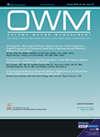局部雌激素、苯妥英钠和磺胺嘧啶银在大鼠伤口愈合时间中的作用。
Q2 Nursing
引用次数: 6
摘要
最近的许多研究都集中在局部药物在伤口愈合过程中的潜在作用。为了比较外用雌激素、苯妥英或磺胺嘧啶银(SSD)治疗全层伤口的愈合时间,我们用32只雄性Wistar大鼠进行了体内研究。在相似的环境条件下,将动物单独饲养在标准笼子中,并在每只大鼠的背部制造一个圆形(直径4毫米)全层皮肤伤口。动物随机分为4组,每组8只大鼠,分别给予局部苯妥英、SSD、雌激素乳膏或不给予治疗/对照。每天对每个伤口进行测量和检查,直到愈合,定义为伤口完全重新上皮化和闭合。计算各组平均愈合时间,采用Tukey多重比较检验进行比较。雌激素组平均愈合时间为11 d,苯妥英组为10 d, SSD组为7.62 d,对照组为11.87 d。SSD组创面愈合明显快于对照组(P < 0.01)和雌激素组(P < 0.01)。其他差异无统计学意义。建议进一步研究,特别是对大样本量的人类随机临床试验,以阐明这些局部药物是否影响伤口结局。本文章由计算机程序翻译,如有差异,请以英文原文为准。
The Role of Topical Estrogen, Phenytoin, and Silver Sulfadiazine in Time to Wound Healing in Rats.
Many recent studies have focused on the potential role of topical agents in the wound healing process. To compare the time to healing of full-thickness wounds treated with topical estrogen, phenytoin, or silver sulfadiazine (SSD), an in vivo study was conducted using 32 male Wistar rats. Animals were housed individually in standard cages in similar environmental conditions, and a single, circular (4 mm in diameter), full-thickness skin wound was created on the dorsum of each rat. Animals were randomly divided into 4 groups of 8 rats each and treated with topical phenytoin, SSD, estrogen cream, or no treatment/control. Each wound was measured and examined daily until healing, defined as complete reepithelialization and closure of the wound. Group mean healing times were calculated, and Tukey's multiple comparison test was used to compare these data. Average times to healing were 11 days in estrogen group, 10 days in phenytoin group, 7.62 days in SSD group, and 11.87 days in control group. Wound healing was significantly faster in the SSD compared to control (P <.01) and the estrogen group (P <.01). No other differences were statistically significant. Further studies, especially randomized clinical trials on human beings with larger sample sizes, are recommended to elucidate if these topical agents affect wound outcomes.
求助全文
通过发布文献求助,成功后即可免费获取论文全文。
去求助
来源期刊

Ostomy Wound Management
医学-外科
CiteScore
0.99
自引率
0.00%
发文量
0
审稿时长
>12 weeks
期刊介绍:
Ostomy/Wound Management was founded in March of 1980 as "Ostomy Management." In 1985, this small journal dramatically expanded its content and readership by embracing the overlapping disciplines of ostomy care, wound care, incontinence care, and related skin and nutritional issues and became the premier journal of its kind. Ostomy/Wound Managements" readers include healthcare professionals from multiple disciplines. Today, our readers benefit from contemporary and comprehensive review and research papers that are practical, clinically oriented, and cutting edge. Each published article undergoes a rigorous double-blind peer review by members of both the Editorial Advisory Board and the Ad-Hoc Peer Review Panel.
 求助内容:
求助内容: 应助结果提醒方式:
应助结果提醒方式:


